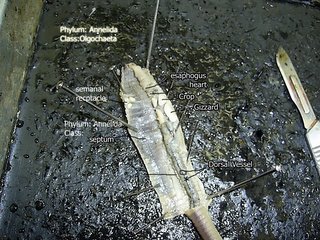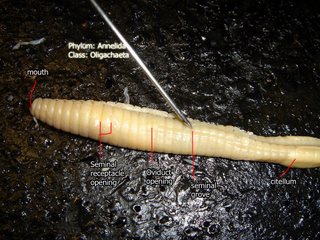Tuesday, November 28, 2006
Friday, November 17, 2006
11-16-06 Frog Dissection

Nostrils, Eyes (Shut) and Tympanic membrane on each side (for hearing)

Better view of the nostrils...

Tongue and Eustachian tubes

Eustachian tube

Glottis

Internal nares

Maxillary teeth

Esophagus

Gluteus

Triceps femoris

Semimembranosus

Gastrocnemius

Peroneus

Ileofibularis

Achilles tendon

gracilis major

Triceps femoris

Sartorius

?

Gastrocnemius

Rectus abdominis

Pectoralis

Mylohyoid

Heart
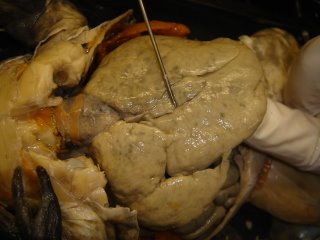
Liver

Stomach

Gall bladder

Small intestine

Large Intestine

Mesentery (membrane)

Spleen
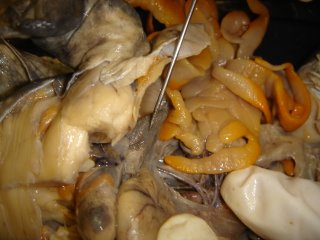
?

Large Intestine

Fat body

leafy stuff beindgheld up is ovary

kidney

Urinary Bladder

Oviduct

Frog is Phylum Chordata, Subphylum Vertebrata, Class Amphibia
11-16-06 Slides

This looks like the fish blood. The way that you can tell the difference between the fish and human blood is that the fish blood has a nucleus, and the human blood does not.

which makes this human blood

sickle cell anemia. Caused by one wrong amino acid on one of the Beta chains of the hemoglobin. Easy to identify because some of the blood cells are sickle shaped.

teased smooth muscle.
One nucleus. Long, thin, tapered.

striated

looks like cardiac muscle

motor neurons

cartilage. You can see the chondrocytes in the matrix (made up of collagen and proteins)
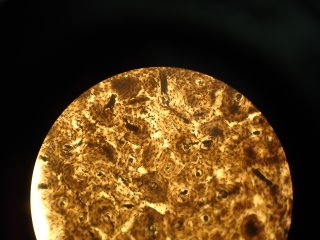
Bone. The spiral things are Haversian systems (Osteon). The center is the Haversian canal. Layers= lamellae. Layers are connected by canalicuti

columnar epithelial

cuboidal epithelial

stratified epithelial (skin)


cuboidal

columnar

columnar

stratified
